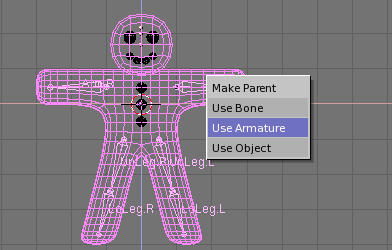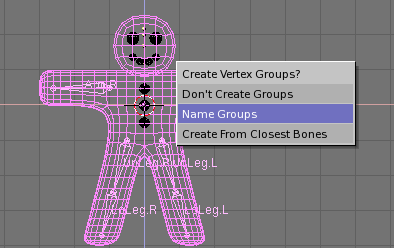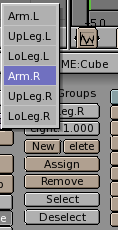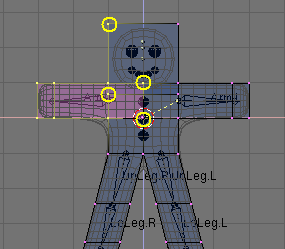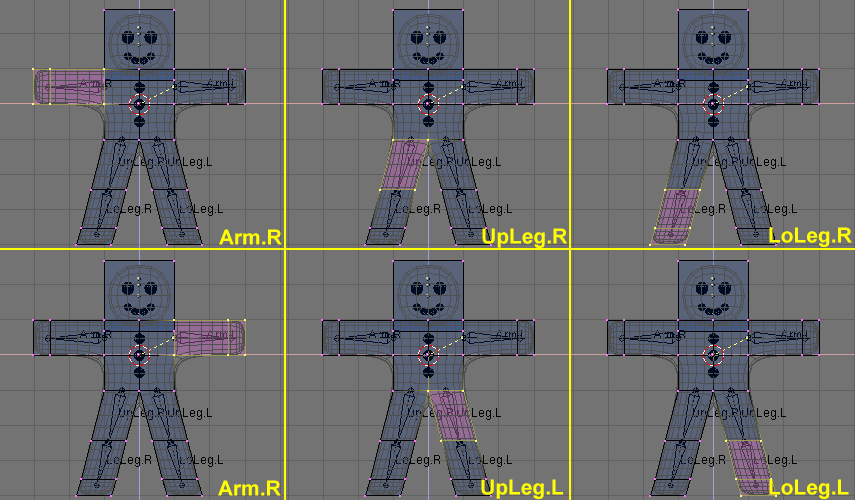Skinning
Now we must make it so that a deformation in the armature causes a matching deformation in the body. This is accomplished in the Skinning process, where vertices are assigned to bones and so are subject to their movements.
Select Gus' body first, then SHIFT select the armature so that the body is magenta and the armature light pink. Press CTRL-P to parent the body to the armature. A Pop up dialog will appear (Figure 53). Select the Use Armature Entry.
A new menu appears, asking you if you want Blender to do nothing else, create empty vertex groups, or create and populate vertex groups (Figure 54).
For our example we will try the automatic skinning option and select Create From Closest Bones
Now select only Gus' body and go to EditMode (TAB). You will notice in the Edit Buttons (F9) window the presence of a vertex group menu and buttons (Figure 55).
By pressing the button with the small white square a menu with all available vertex group pops up (six in our case, but trulycomplex character, whith hands andfeets completely rigged can have tens of them! Figure 56). The buttons Select and Deselect shows you which vertices belongs to which group.
Select the Right arm (Arm.R) group and press Select. You should see something like Figure 57.
The vertices marked with the yellow circles in Figure 57 do belong to the deformation group because the autoskinning process found that they were very close to the bone, but should not, since some are in the head and some in the chest and we don't want them to be deformed. To remove them from the group De-select all the others by using Box selection (BKEY) but resorting to the MMB to define the box. This way all vertices within the box which are selected become de-selected.
Once only the 'undesired' vertices remain selected, press the Remove button (Figure 55) to eliminate them from group Arm.R.
De-select all (AKEY) and check another group. Check them all and be sure they look like those in Figure 58.
 | Vertex groups |
|---|---|
Be very careful when assigning/removing vertices from vertex groups. If later on you see unexpected deformations, you might have forgotten some vertices, or taken too many away. You can of course modify your vertex groups at any time. |
 | Other details |
|---|---|
Please note that what we are doing will only affect Gus' body, not his eyes, teeth or buttons, which are separate objects. This is not an issue in our simple animation, but must be taken into account for more complex projects, for example by parenting them to the Body or by joining them to it, to make a single mesh. All these options will be described in detail in the pertinent chapters. |
